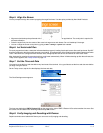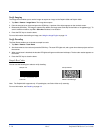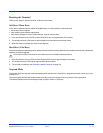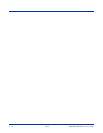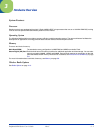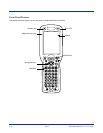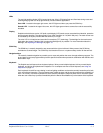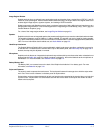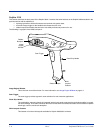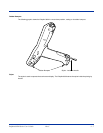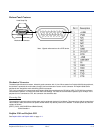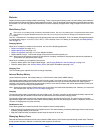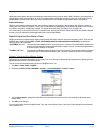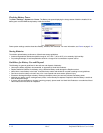
Dolphin® 9500 Series User’s Guide Rev C 3 - 5
Image Engine Window
Dolphin terminals have an optional image engine that reads and decodes linear, stacked linear (PDF417), and 2D
matrix bar code symbologies. With the latest CMOS-based technology, the engine works like a digital camera and
enables digital image capture, signature capture, and reading of OCR characters.
Digital images taken with Dolphin terminals have a maximum image size of 640 x 480 pixels and may have up to a
256 grayscale image definition. Files formats supported for image storage include Bitmap (.bmp), JPEG (.jpg) and
Portable Network Graphics (.png).
For a view of the image engine window, see Image Engine Window on page 3-6.
Speaker
Dolphin terminals have an integrated speaker that sounds audio signals as you scan bar code labels and enter data.
The operating frequency range is 500Hz at 71 dB up to 80 dB. The speaker can also be used for playing sounds
(e.g., WAV or MP3 files) as well as voice communication in handset mode in a terminal equipped with a GSM/GPRS
radio. For more information about handset use, see Audio Modes on page 9-3.
Hand Strap Attachment
The Dolphin 9500 and Dolphin 9551 have an adjustable, elastic hand strap to provide a comfortable, secure grip
on the terminal. It is attached to the terminal with a clip on the bottom panel; see Hand Strap Clip on page 3-9. If
desired, the strap may be adjusted or removed.
Microphone
Dolphin terminals feature an integrated microphone that provides audio input to the terminal when a headset is not
plugged into the Audio Jack, page 3-8. When a headset is plugged in, the terminal defaults to the microphone on
the headset. For more information, see Headset Control on page 5-4.
Battery/Battery Well
The Battery Well is a recessed area on the back of the Dolphin that holds the Li-Ion battery pack. For more
information, see Batteries on page 3-10.
Stylus and Fastener
The stylus is used to operate the touch screen. The back panel features this storage slot to hold the stylus when
not in use. There is also a fastener on the back panel for stylus tethers.
Stylus tethers can be purchased separately to help you keep the stylus attached to the terminal when not in the slot
to prevent loss. A stylus tether is a coiled elastic cord with one end to attach to the stylus and another to attach
fasten to the back panel.



